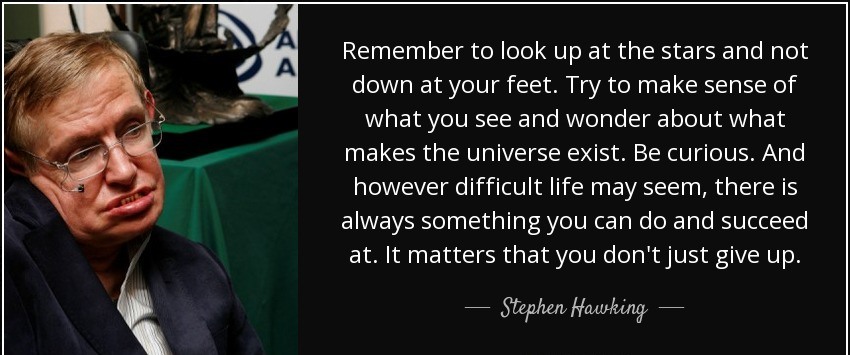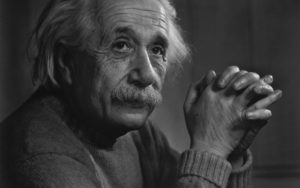Look up at the stars and not down at your feet. Try to make sense of what you see, and wonder about what makes the universe exist. Be curious.
Article Contents
Introduction
Stephen William Hawking (8 January 1942 – 14 March 2018) was an English theoretical physicist, cosmologist, author and Director of Research at the Centre for Theoretical Cosmology within the University of Cambridge. His scientific works include a collaboration with Roger Penrose on gravitational singularity theorems in the framework of general relativity and the theoretical prediction that black holes emit radiation, often called Hawking radiation. Hawking was the first to set out a theory of cosmology explained by a union of the general theory of relativity and quantum mechanics. He was a vigorous supporter of the many-worlds interpretation of quantum mechanics.
Interesting Facts about Stephen Hawking
Few people emerge from the fields of cosmology and theoretical physics with the sort of name recognition equal to that of a celebrity athlete or actor, but that’s exactly what’s happened with Stephen Hawking.
The Mediocre Student
Hawking didn’t have the sort of sparkling early academic career you’d expect from a Grade-A genius. He claims he didn’t learn to properly read until he was 8 years old, and his grades never surpassed the average scores of his classmates at St. Albans School. Of course, there was a reason those same classmates nicknamed him “Einstein”; Hawking built a computer with friends as a teenager, and demonstrated a tremendous capacity for grasping issues of space and time. He also got it together when it counted, dominating his Oxford entrance exams to score a scholarship to study physics at age 17.
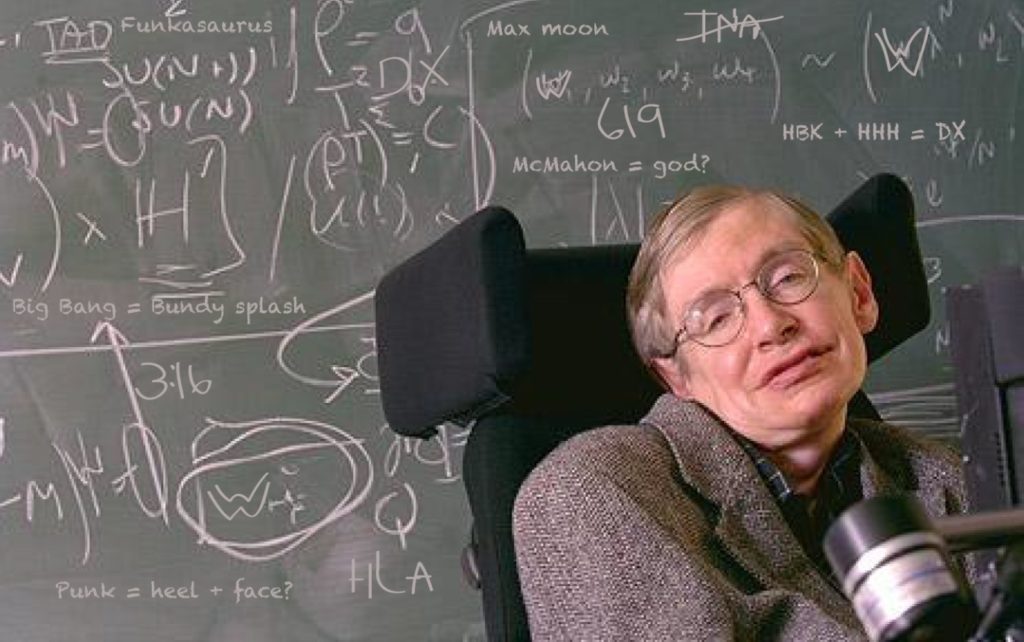
The Diagnosis
After falling while ice skating during his first year as a grad student at Cambridge University, Hawking was told he had the degenerative motor neuron disease Amyotrophic Lateral Sclerosis (ALS) and had only 2 1/2 years to live. Obviously that prognosis was light years off, but it seems early onset of the disease was a blessing in disguise, of sorts. Most ALS patients are diagnosed in their mid-50s and live another two to five years, but those diagnosed earlier tend to have a slower-progressing form of the disease. Furthermore, the loss of motor skills forced the burgeoning cosmologist to become more creative. “By losing the finer dexterity of my hands, I was forced to travel through the universe in my mind and try to visualize the ways in which it worked,” he later noted.
Built a Computer
At the St. Albans High School, he built a computer along with his group of friends and his Mathematics teacher Dikran Tahta from an old telephone switchboard, clock parts and other recycled components
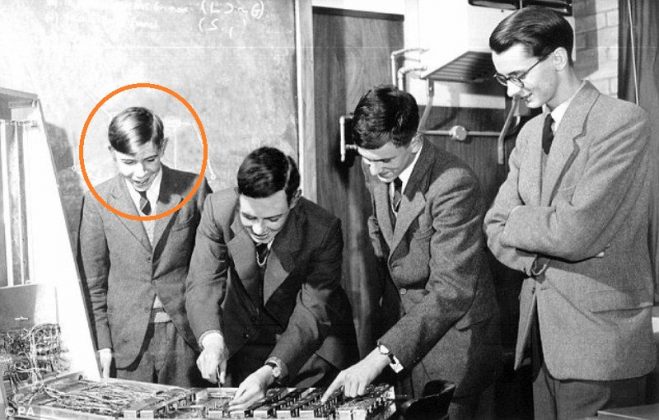
The Equation
While it’s impossible to sum up Hawking’s life in one word, it can be done with one equation:
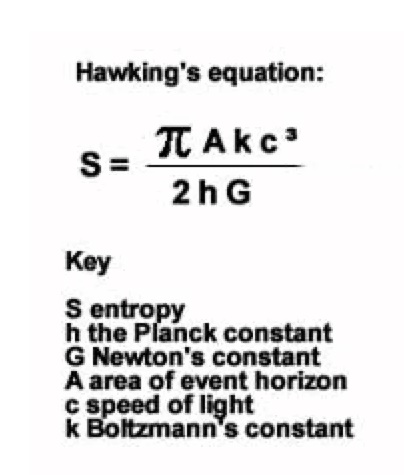
This formula, which involves the speed of light (c), Newton’s constant (G) and other symbols that make the non-mathematically inclined run for cover, measures emissions from black holes that today is known as Hawking radiation. Hawking was initially puzzled by these findings, as he believed black holes to be celestial death traps that swallowed up all energy. However, he determined there was room for this phenomenon through the merging of quantum theory, general relativity and thermodynamics, distilling it all into one (relatively) simple but elegant formula in 1974. Already known for establishing important ground rules about the properties of black holes, this discovery kicked his career into a higher gear and set him on the path to stardom. Hawking has since said he would like this equation to be carved on his tombstone.
When Hawking lost a bet
In 1997, Stephen Hawking lost a bet to American Theoretical Physicist John Perskill about the concept of Black Holes which stated that nothing can escape from a black hole which was in violation to the fundamentals of quantum mechanics. Finally he admitted his defeat in 2004.
The Machine
Hawking’s original synthesizer was created by a California-based company called Words Plus, which ran a speech program called Equalizer on an Apple II computer. Adapted to a portable system that could be mounted on a wheelchair, the program enabled Hawking to “speak” by using a hand clicker to choose words on a screen. No longer able to use his hands, Hawking now has an infrared switch mounted on his glasses that generates words by detecting cheek movement. He also recently had the communication technology overhauled by Intel, though he insisted on retaining the same robotic voice with its distinctly non-British accent he’s been using for nearly three decades, as he considers it an indelible part of his identity.
Hawking took a zero gravity flight to save the human race
In 2007, Hawking took a zero gravity flight using the service provided by Zero Gravity Corp. This service allows people to take a flight which ascends and descends quickly to give people the feeling of free-fall (zero gravity) which can extend for up to 25 seconds. Hawking, able to float out of his wheelchair, performed acrobatics in zero gravity. But the reason he did this was strange and seems straight out of science fiction. Hawking says that in the future due to global warming and nuclear war the Earth might not be habitable anymore, so he supports tourist space travel in which normal people can travel to outer space and colonize other planets and their satellites in the future when the Earth can no more sustain human life.
